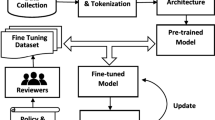Abstract
In this paper, we propose a mobile spoken dialogue system with a new spoken dialogue understanding architecture (SLU). This new SLU module combines an ontology and a dependency graph to do semantic analysis. The turn analysis algorithm integrated in the SLU module uses, at each turn of the dialogue, the dependencies generated by Stanford parser and a domain ontology to analyze the sentence and to extract user’s intention and slots values (i.e. user dialogue acts, concepts and their values). The SLU module maps the sentence into a structure. The dialogue manager receives this mapping structure from the SLU module and chooses the action to be taken by the system. The mobile spoken dialogue system was developed as a remote system on a mobile phone. It utilizes Google server for recognition and Google text to speech for speech synthesis provided with Android system. Dialogue understanding, dialogue managing and text generating modules reside on a remote computer. Ten users have tested the first version of our system and a score of 3.6 on Likert scale was obtained.









Similar content being viewed by others
References
Bohus, D., Raux, A., Harris, T. K., Eskenazi, M., & Rudnicky, A. I. (2007). Olympus: an open-source framework for conversational spoken language interface research. In Proceedings of the workshop on bridging the gap: Academic and industrial research in dialog technologies (pp. 32–39).
Bohus, D., & Rudnicky, A. I. (2003). Ravenclaw: Dialog management using hierarchical task decomposition and an expectation agenda. In Proceedings of Eurospeech.
Bos, J., Klein, E., Lemon, O., & Oka, T. (2003). Dipper: Description and formalisation of an information-state update dialogue system architecture. In 4th sigdial workshop on discourse and dialogue (pp. 115–124).
De Marneffe, M.-C., & Manning, C. D. (2008). The stanford typed dependencies representation. In Coling 2008: Proceedings of the workshop on cross-framework and cross-domain parser evaluation (pp. 1–8).
Dzikovska, M. O., Allen, J. F., & Swift, M. D. (2003). Integrating linguistic and domain knowledge for spoken dialogue systems in multiple domains. In Proceedings of ijcai-03 workshop on knowledge and reasoning in practical dialogue systems.
Gruber, T. R. (1993). A translation approach to portable ontology specifications. Knowledge acquisition, 5(2), 199–220.
Johnston, M., Bangalore, S., Vasireddy, G., Stent, A., Ehlen, P., Walker, M., Maloor, P. (2002). Match: An architecture for multimodal dialogue systems. In Proceedings of the 40th annual meeting on association for computational linguistics (pp. 376–383).
Lee, C., Jung, S., Kim, K., Lee, D., & Lee, G. G. (2010). Recent approaches to dialog management for spoken dialog systems. JCSE, 4(1), 1–22.
Martin, & Jurafsky, (2000). Speech and language processing. Noida: Prentice Hall.
Mazuel, L. (2007). Utilisation des ontologies pour la modélisation logique dune commande en langue naturel. Rencontre des étudiants chercheurs en informatique pour le traitement automatique des langues (RECITAL 2007).
Pérez, G., Amores, G., Manchón, P., Gómez, F., & González, J. (2006). Integrating owl ontologies with a dialogue manager. Proce-samiento del Lenguaje Natural, 37, 153–160.
Quarteroni, S., Riccardi, G., & Dinarelli, M. (2009). What’s in an ontology for spoken language understanding. In Interspeech (pp. 1023–1026).
Raymond, C., & Riccardi, G. (2007). Generative and discriminative algorithms for spoken language understanding. In Interspeech (pp. 1605–1608).
Sirin, E., Parsia, B., Grau, B. C., Kalyanpur, A., & Katz, Y. (2007). Pellet: A practical owl-dl reasoner. Web Semantics: Science, services and agents on the World Wide Web, 5(2), 51–53.
Stanford University. (2013). Stanford parser: A statistical parser. Stanford: The Stanford Natural Language Processing Group.
Tur, & de Mori, (2011). Spoken language understanding: Systems for extracting semantic information from speech. Hoboken: Wiley.
Wang, Y.-Y., & Acero, A. (2006). Discriminative models for spoken language understanding. In Interspeech.
Young, S., Schatzmann, J., Weilhammer, K., & Ye, H. (2007). The hidden information state approach to dialog management. In Acoustics, speech and signal processing, 2007. In: IEEE international conference on ICASSP 2007 (Vol. 4, pp. IV-149).
Zouaq, A., & Nkambou, R. (2009). Evaluating the generation of domain ontologies in the knowledge puzzle project. IEEE Transactions on Knowledge and Data Engineering, 21(11), 1559–1572.
Author information
Authors and Affiliations
Corresponding author
Rights and permissions
About this article
Cite this article
Sidi Yakoub, M., Selouani, SA. & Nkambou, R. Mobile spoken dialogue system using parser dependencies and ontology. Int J Speech Technol 18, 449–457 (2015). https://doi.org/10.1007/s10772-015-9280-x
Received:
Accepted:
Published:
Issue Date:
DOI: https://doi.org/10.1007/s10772-015-9280-x




